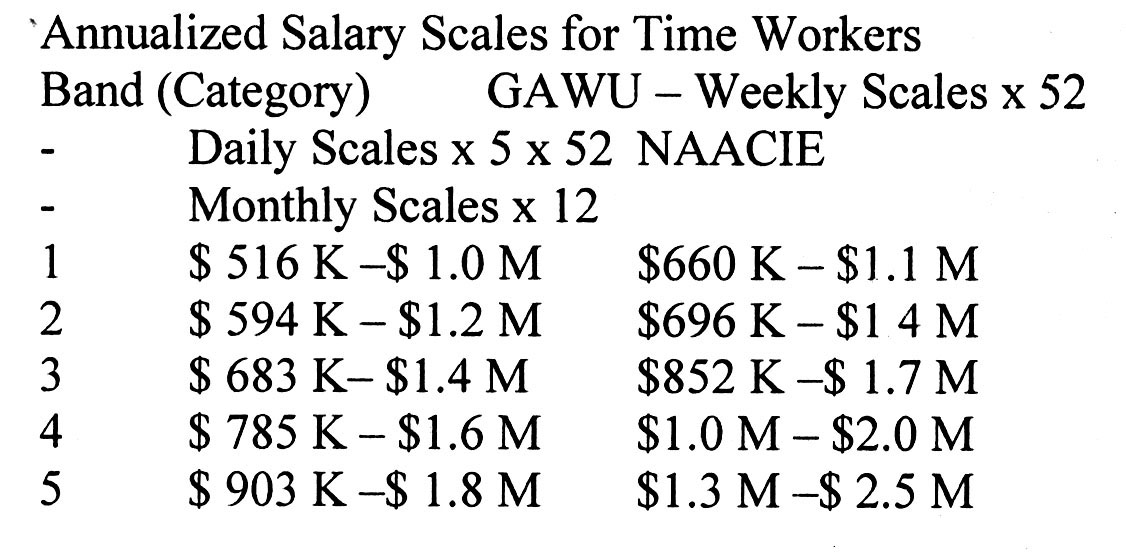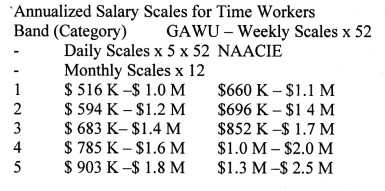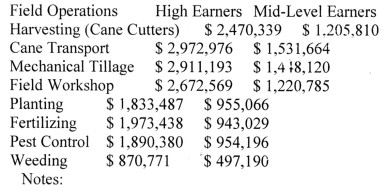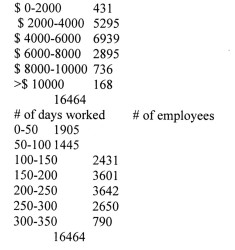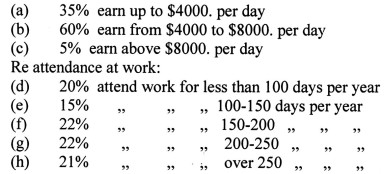Dear Editor,
There has been a barrage of comments in the media after the Report of the Commission of Inquiry (CoI) into GuySuCo was made public recently. Many of these focused on the issue of privatization of the industry while others concerned the veracity or credibility of the data presented to show the relative earnings of rank and file sugar workers. As the Commissioner responsible for the Human Resource Management & Industrial Relations aspects of the work of the CoI, I am naturally concerned about the latter and anxious to set the record straight. The Chairman of the CoI has now authorized me to respond to the comments and issues raised regarding the HR/IR aspects and I have no doubt that responses to the other issues will be appropriately dealt with in due course.
I beg readers’ indulgence in prefacing that I was personally surprised when the earnings and attendance data were presented to me. Despite my antecedents in the industry (‘weh me navel string chuk’) and my long experience therein both as a rank and file worker and a professional staff in the Human Resource Management function, I never would have guessed that the actual and potential earning power of sugar workers had been improved to such an extent; I was similarly amazed at the relatively poor attendance at work, despite the plethora of incentives introduced over the recent years to achieve a higher level of attendance. I think these are clear examples of several outdated perceptions which plague the thinking and beliefs of those who might be bent on projecting anachronistic images of the industry for reasons other than the true benefit of the industry and the sustainable welfare of its employees. The conditions of employment and certainly the earnings of sugar workers have been increased substantially relative to workers in other sectors of the economy between the time I last worked in the industry some 16 years ago and now; I have no reason to begrudge them; all of us would certainly like that trend to continue but we know it cannot if the goose that lays the golden egg’ dies because we failed to feed it and maintain its own health. In other words, if we allow employment costs in GuySuCo to continue to run away beyond affordability within and relativity outside the industry.
The majority of GuySuCo workers are piece or task-rated such as cane-harvesters who are paid on the basis of the amount of work done as opposed to others who are time-rated, ie, paid by the hour or day or week or month, irrespective of the amount of work done.
The ‘preamble’ to the presentation of the earnings data is titled: ‘Myths about earnings of Field Workers’ and it goes on to acknowledge that “It is generally felt that Field Workers, especially piece workers, are not doing as well, earnings wise, as their counterpart time workers, Foremen and Supervisors especially because they do not get full year-round employment or because they have to haggle over ‘extras’ etc.” The Report then compares the 2014 annual gross salaries earned by time workers, charge hands, foremen and supervisors with the 2014 annual gross earnings of various categories of piece workers who typically work less than a full year, given the in-crop and out-of-crop realities of GuySuCo field operations.
The Report goes on to state that the most revealing conclusion that can be drawn from the statistical data is “the fact that Field piece workers can earn more than their counterparts doing time work and even their Foremen and Supervisors”. These assertions are derived from the following statistics:
(a) Comparative annualized Salary Scales vis-à-vis annualized Earnings of Piece Workers (2014)
Annualized High and Mid-Level Earnings in Various Field Operations (2014)
Notes:
- The above salary scales were derived from the Agreements with GAWU & NAACIE for 2014
- The Field workers earnings ranges were derived from the payroll data supplied by GuySuCo for all seven estates showing the typical average earnings of mid to high level earners. It is important to note that the differential between high, mid and low level earners is more a function of their variable attendance at work as opposed to the price paid for the work done. For example in 2014 the average attendance rate across the industry was 58% for cane harvesters and 71% for other field workers.
- A comparison was also done with the current salary scales for teachers and civil servants all of which show that the earnings of GuySuCo workers compare quite favourably, especially when one considers their actual attendance at work.
As a double-check on the data supplied by GuySuCo, the CoI independently and directly approached the ISD (Information Systems Dept of GuySuCo) for corroborative data on the average daily gross pay of rank and file workers. This resulted in the following data which, in the considered opinion of the CoI, validates the conclusion that GuySuCo’s piece workers are, comparatively, reasonably well paid:
For further clarification of the above statistics the following observations are made regarding field/factory workers’ earnings and attendance at work:
Re earnings:
Questions have been raised in the media as to the reason for the chronic ‘shortage of workers’ in the fields, given the relatively good earning potential in GuySuCo as presented above. In this context it is necessary to emphasize the following:
- The ‘vacancy rate’ is negligible (as measured by the number of employees on roll vis-à-vis GuySuCo’s budgeted establishment). The problem is with the attendance which suffers because the formula for ‘qualifying ‘ to remain on roll and enjoy all the benefits of a regular worker is overly liberal and augmented by several premia available for weekend work as detailed in the CoI Report. Furthermore, many employees attend the barest minima to ‘qualify’ for GuySuCo benefits then they opt to work elsewhere (rice, cash crops, construction and goldfields where income tax and NIS deductions are not made as is done at GuySuCo).
- GuySuCo has not done as good a job as they might have to publicize that it is a good employer (despite the extraordinarily high incidence of strikes and apparent strife in the industry); its communication and PR have not been as good as they could have been and the CoI Report does say so quite unequivocally.
It is my fervent hope and prayer, and I know I also speak for my colleagues in the CoI, that readers and especially compatriots who have sensed and/or expressed doubts about the credibility /authenticity of the data presented will reflect fairly on the foregoing attempt to put things in perspective and to allay any doubts or fears that the data were manipulated or misrepresented in any way for any ulterior motive. And if I may end on a personal note as I began, I have too much at stake with my family, friends and fellow Guyanese to tolerate any iota of dishonesty, deceit or manipulation of the facts and realities of employment conditions in my alma mater, the sugar industry of Guyana.
Yours faithfully,
Nowrang Persaud
